Abstract
When a number of two-stimulus relations are established through training within a set of stimuli, other two-stimulus relations often emerge in the same set without direct training. These, termed “transitive stimulus relations,” have been demonstrated with a variety of visual and auditory stimuli. The phenomenon has served as a behavioral model for explaining the emergence of rudimentary comprehension and reading skills, and the development of generative syntactic repertoires. This article considers the range of relations that can arise between a given number of stimuli in a class, the number of directly established two-stimulus relations necessary for the emergence of transitive relations, the forms that training sets of stimuli can take, and the number of transitive two-stimulus relations that can be induced without direct training. The procedures needed to establish and assess transitive stimulus control, the possible interactions between the training and testing procedures, and the constrainst these interactions place upon the analysis of transitive stimulus control are also examined. The present analysis indicates that in a transitivity test, choice among such stimuli may be controlled by (1) the relation between the sample and the positive comparison stimulus (transitive stimulus control), (2) the relation between the sample and the negative comparison stimulus (S- rule control), and (3) possible discriminative properties that may inadvertently be established in the positive and negative comparison stimuli (valence control). Methods are described for distinguishing these three forms of stimulus control.
Keywords: stimulus equivalence, transitive stimulus control, complimentarity, mediated association, nodal training clusters, associative distance, concept formation, cognition, language acquisition
Full text
PDF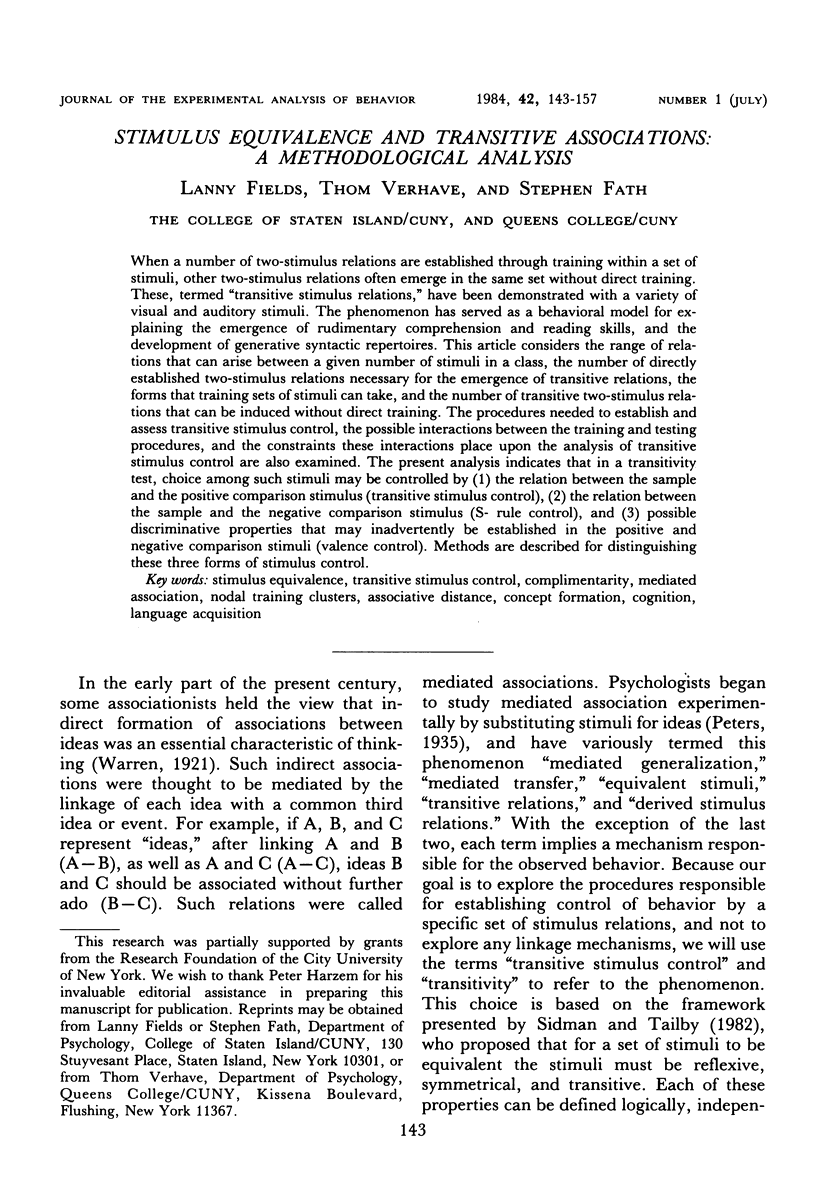
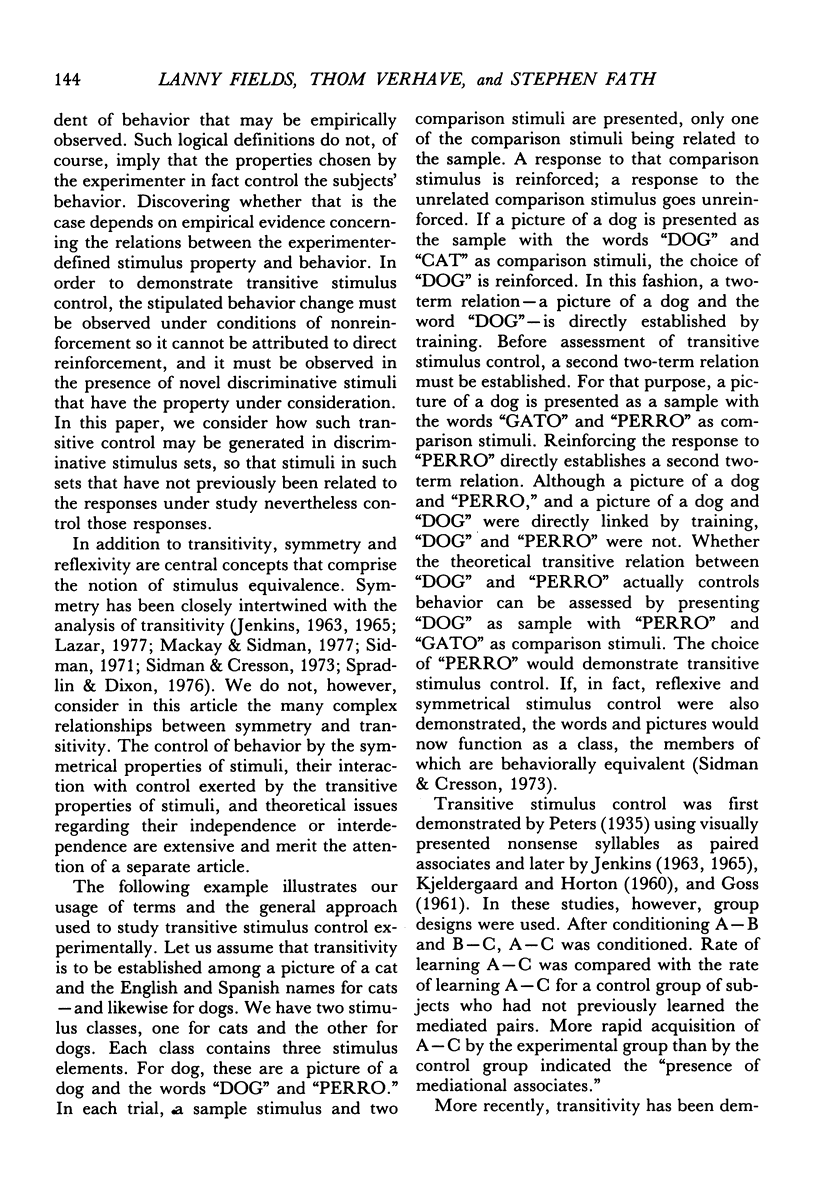
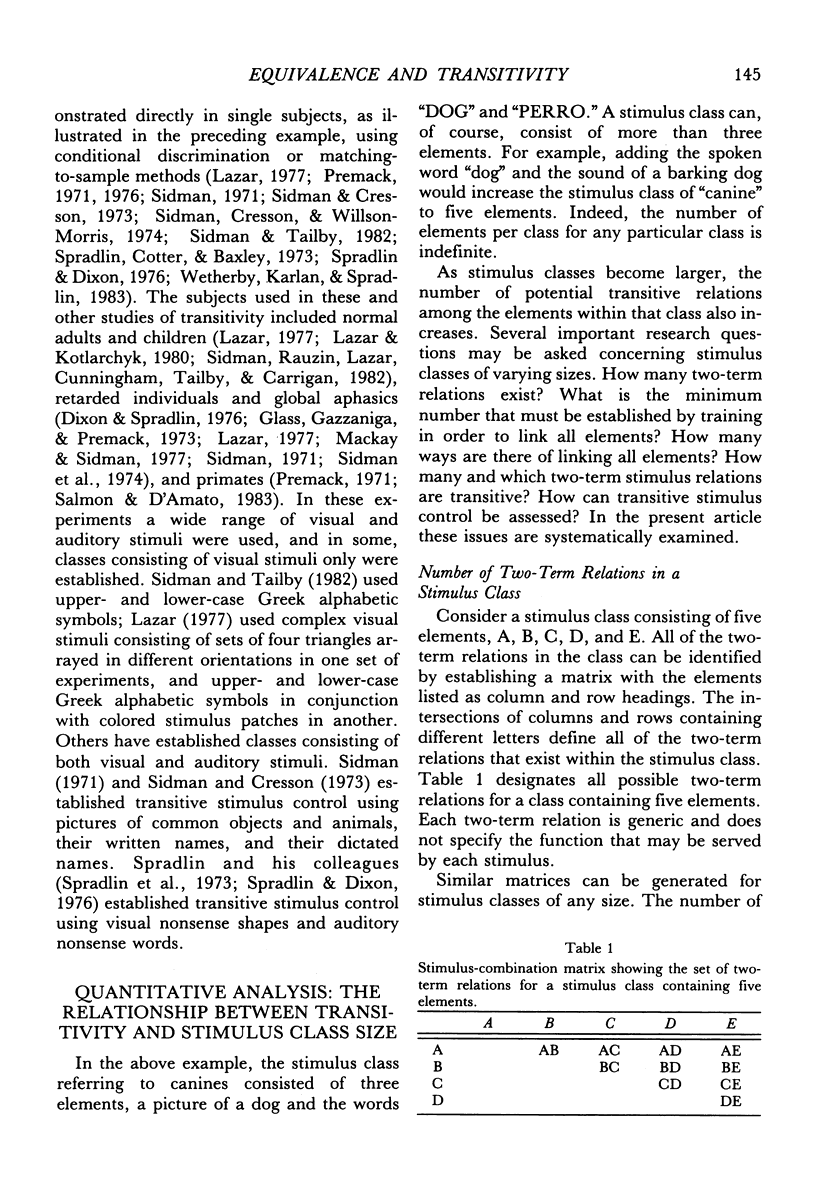
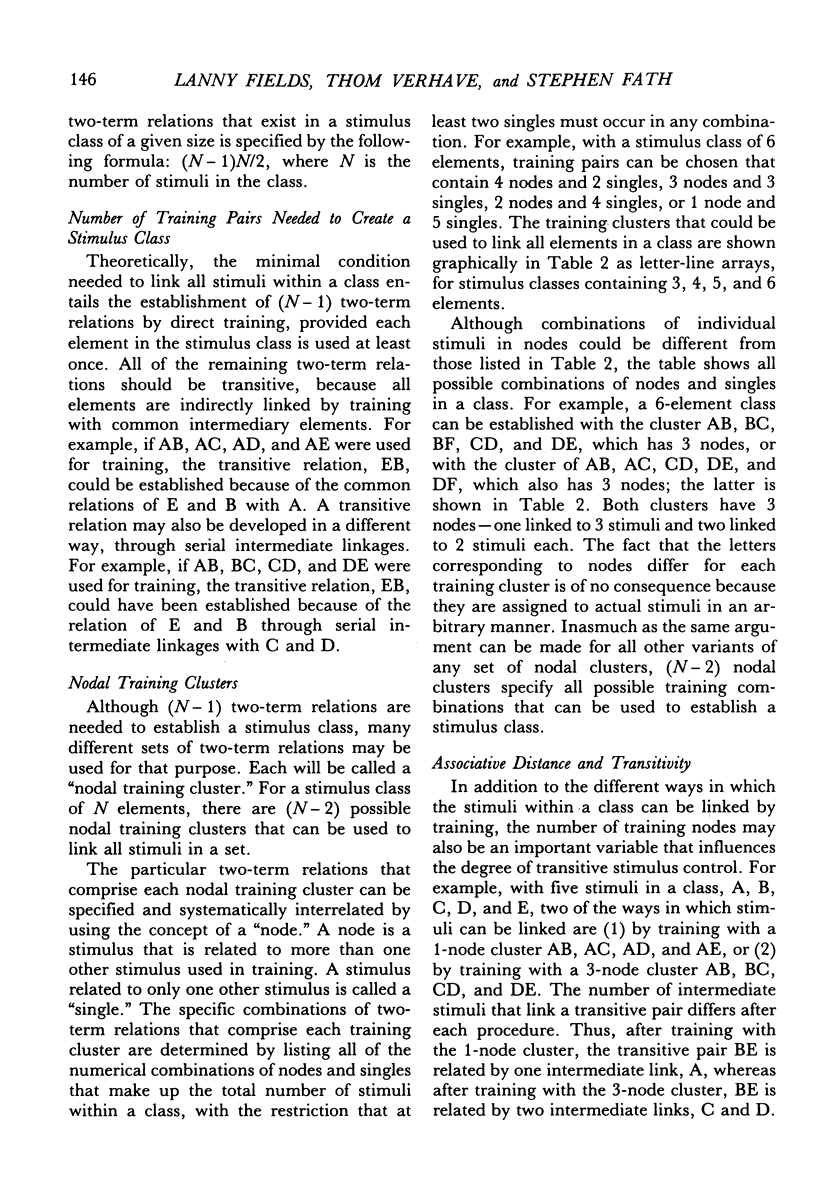
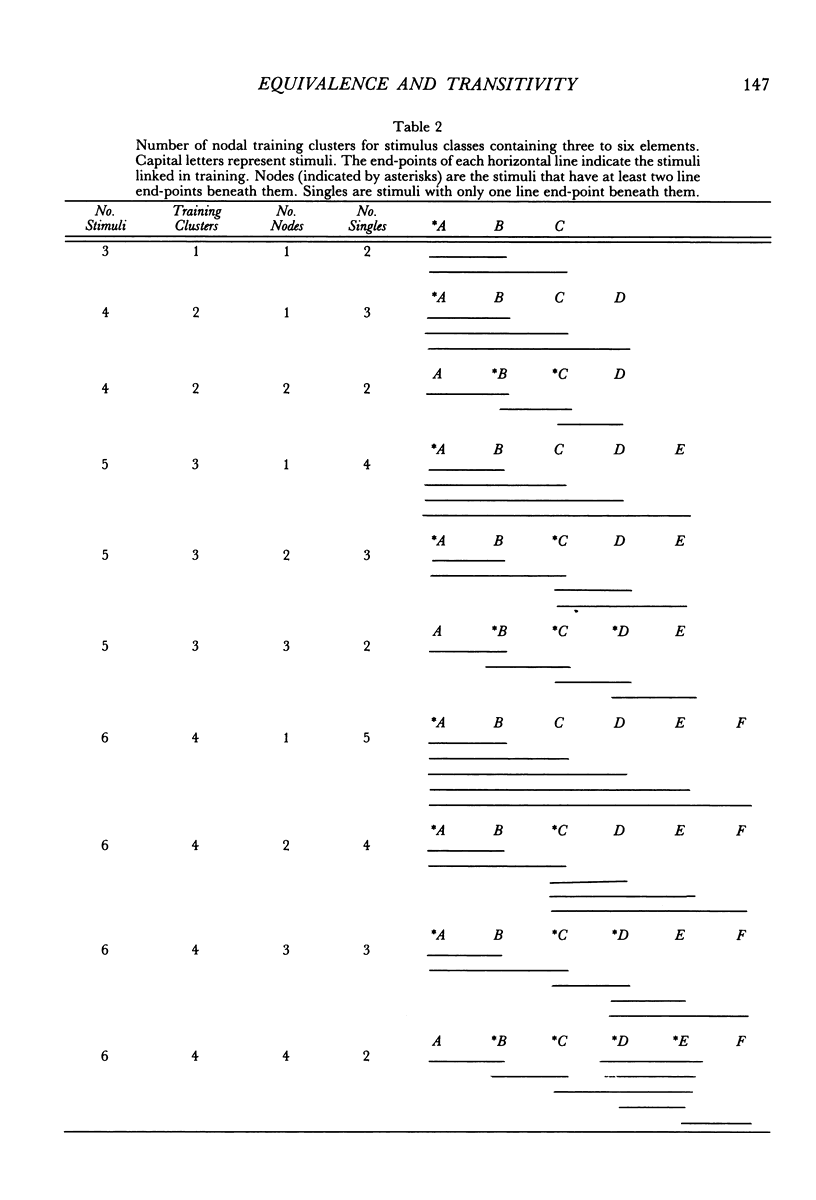
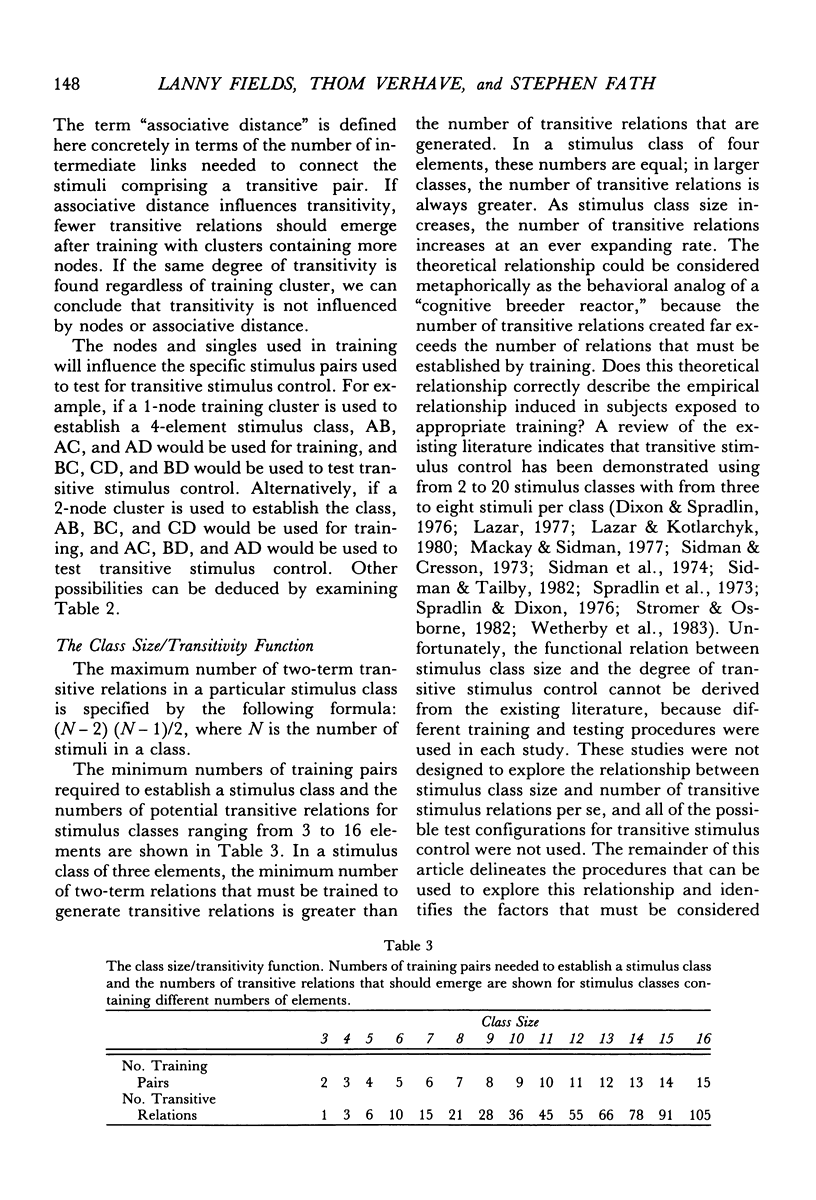
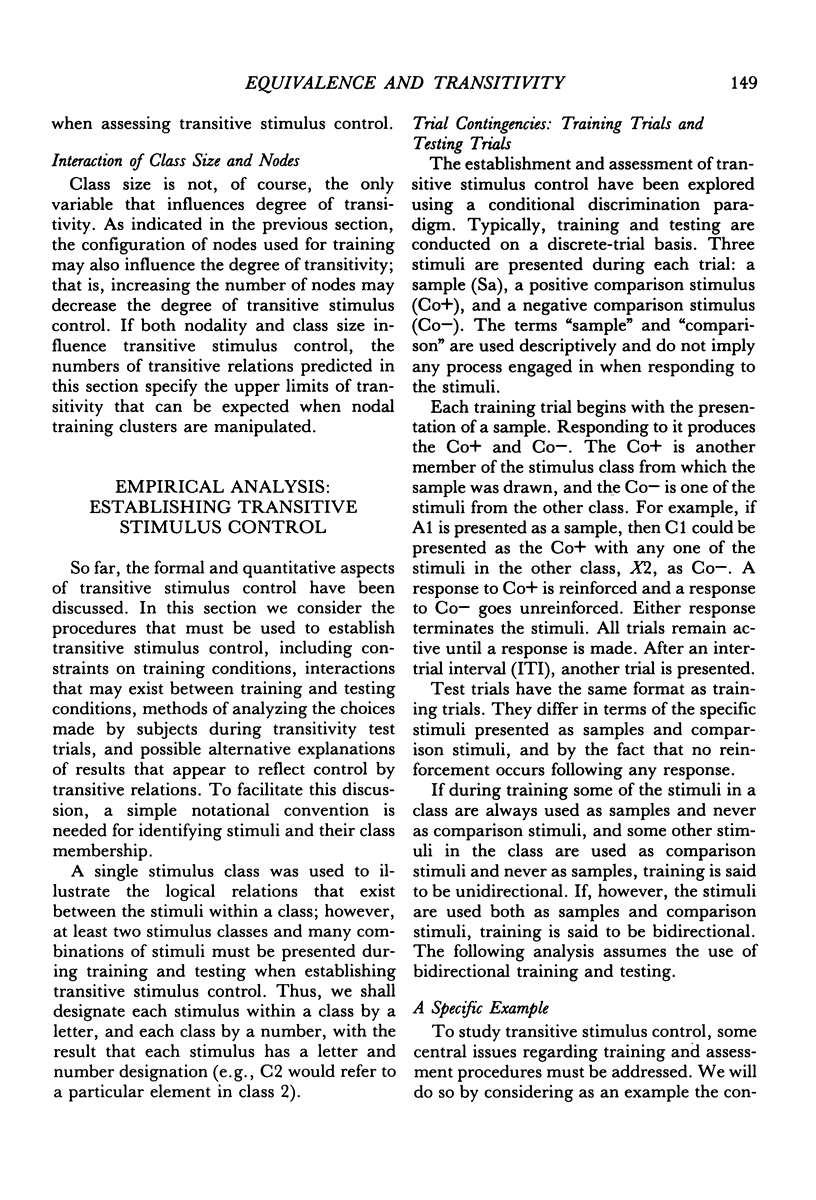
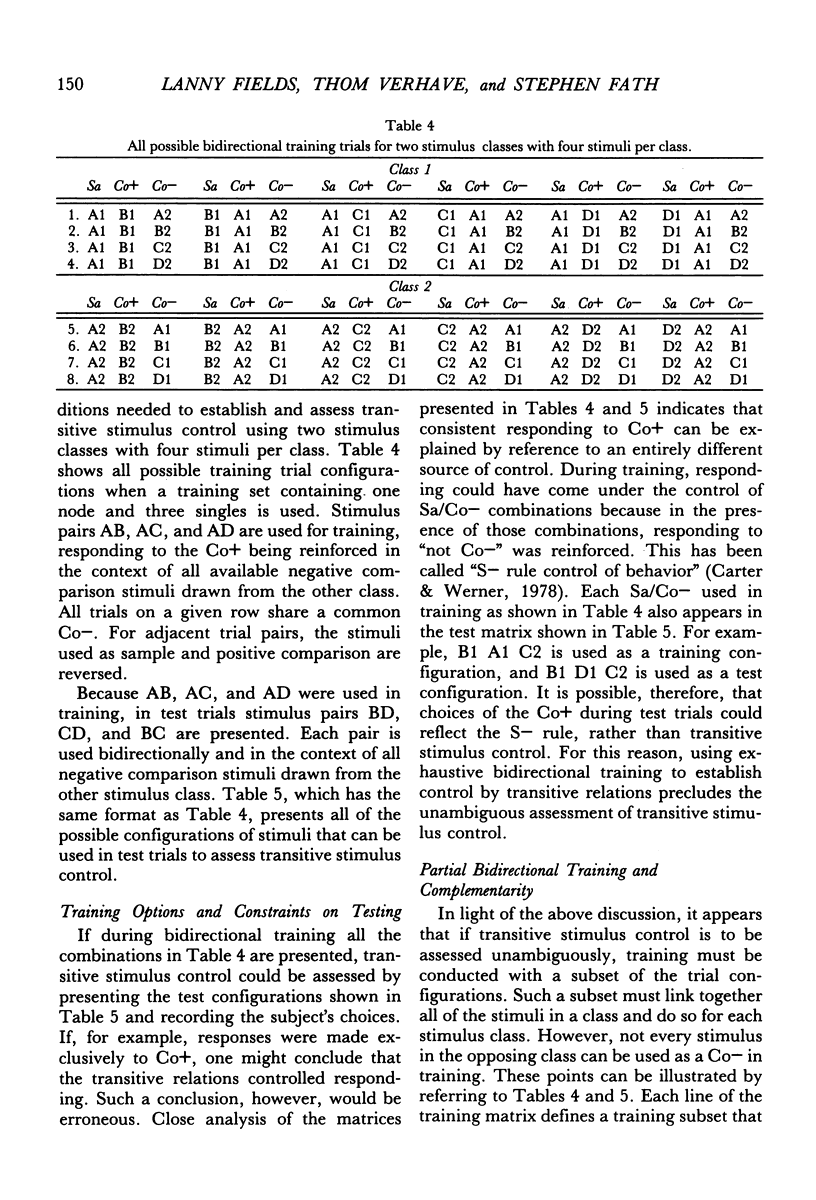
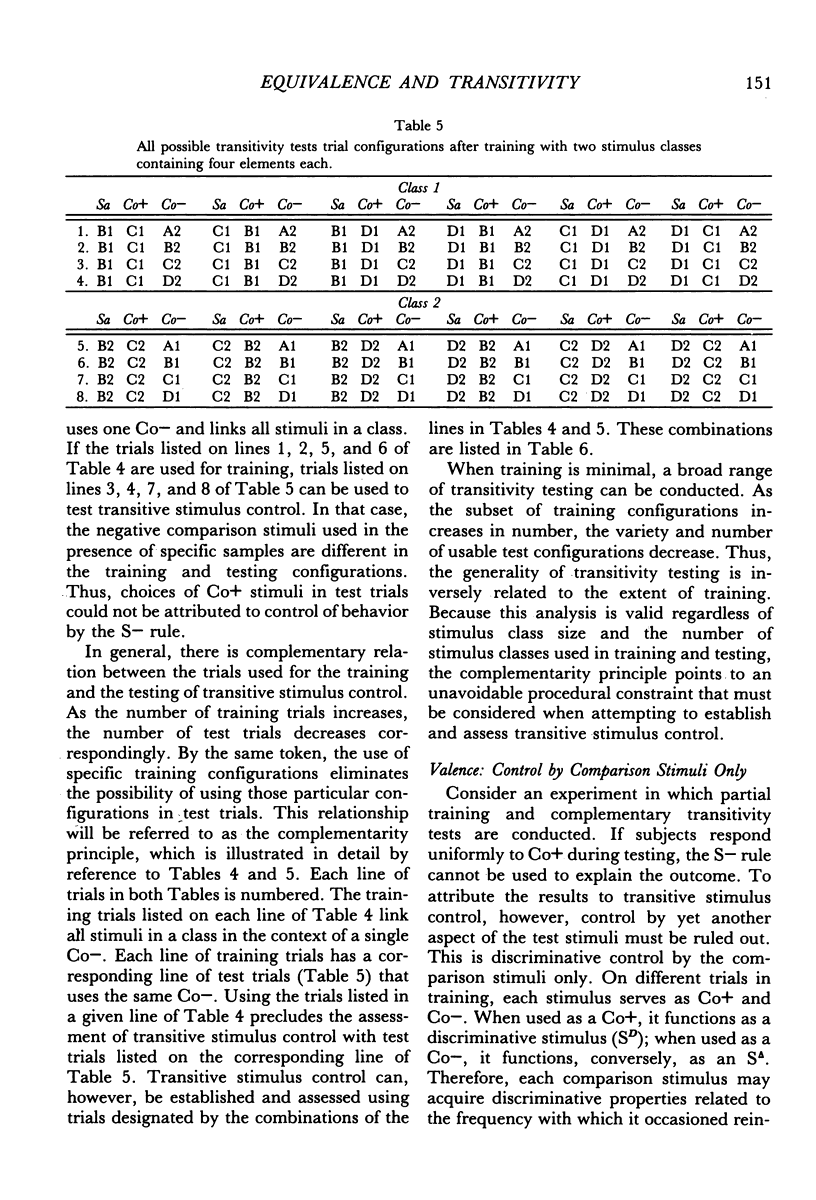
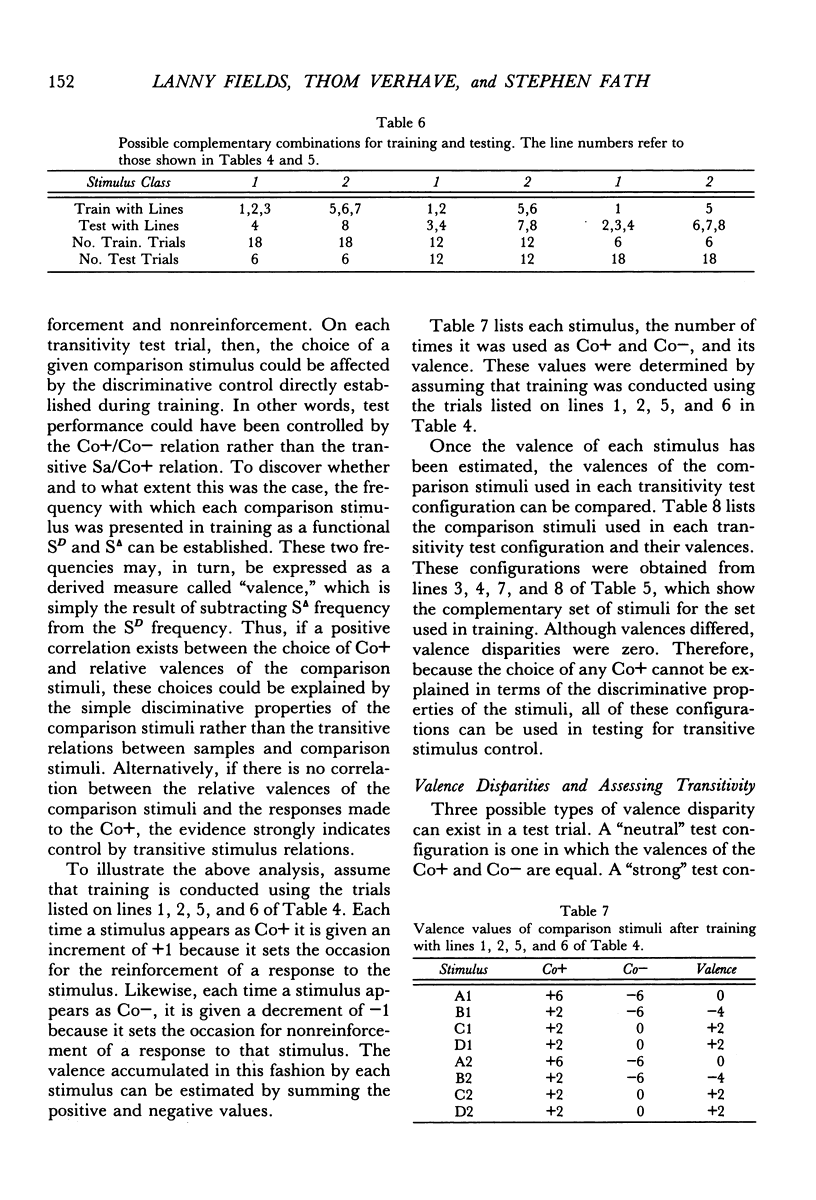
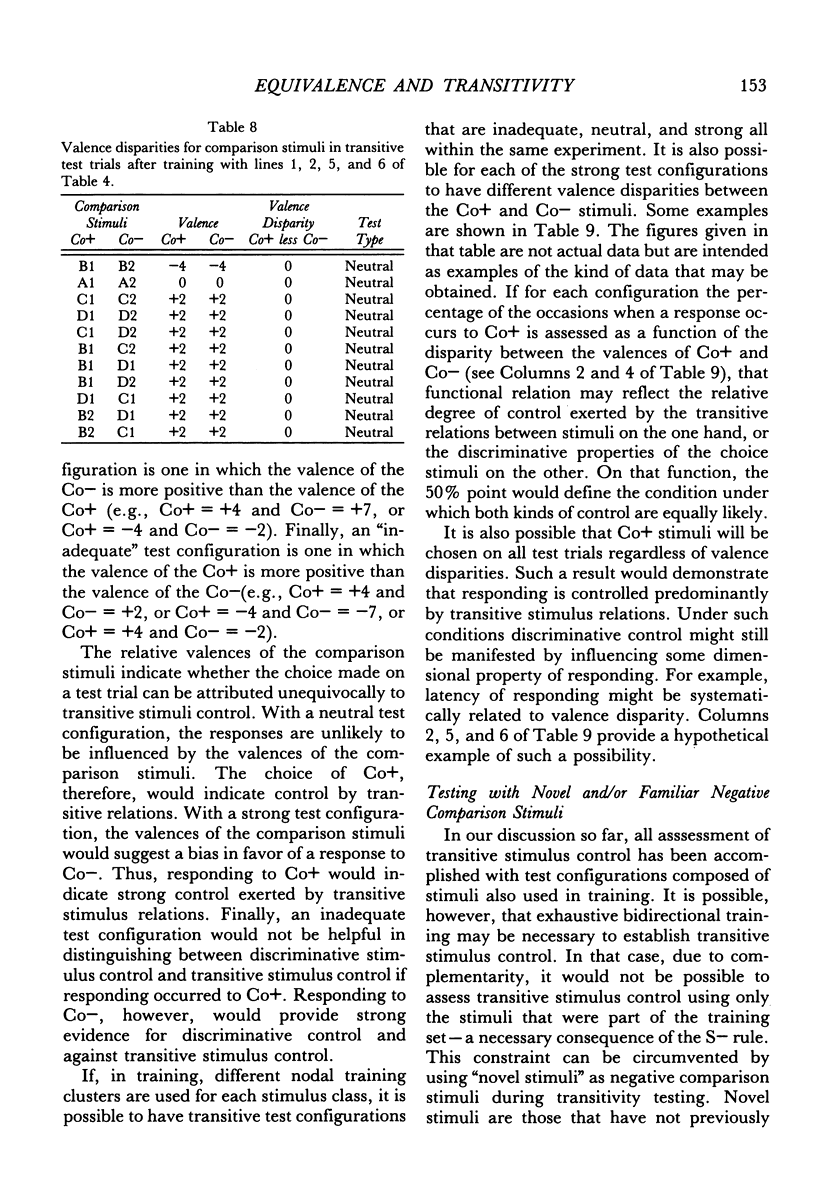
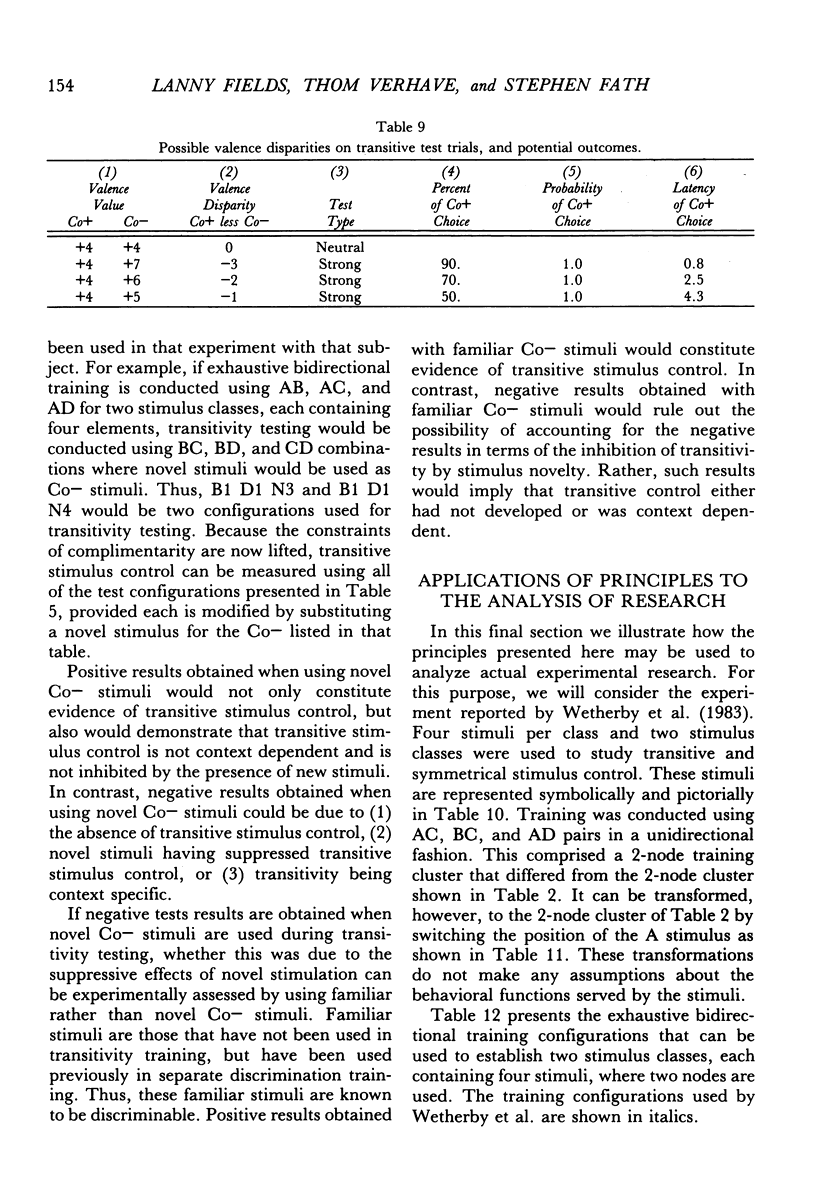
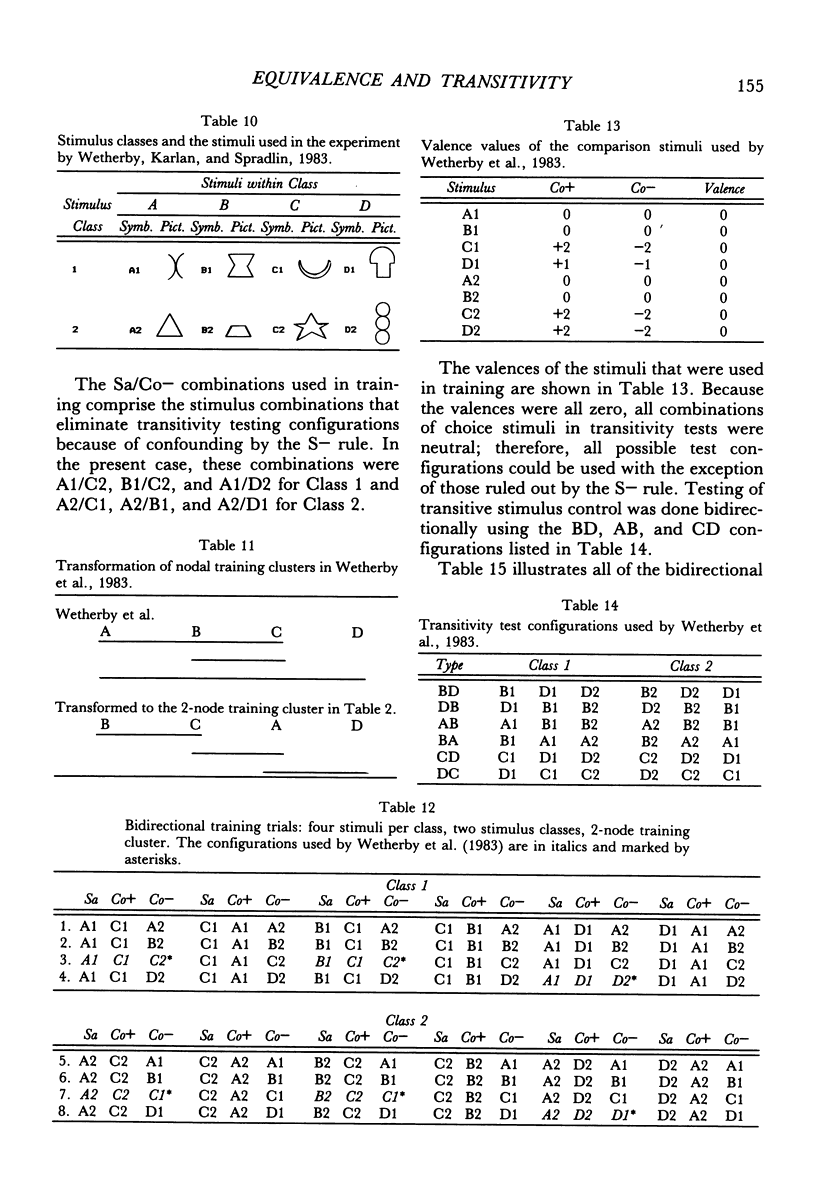
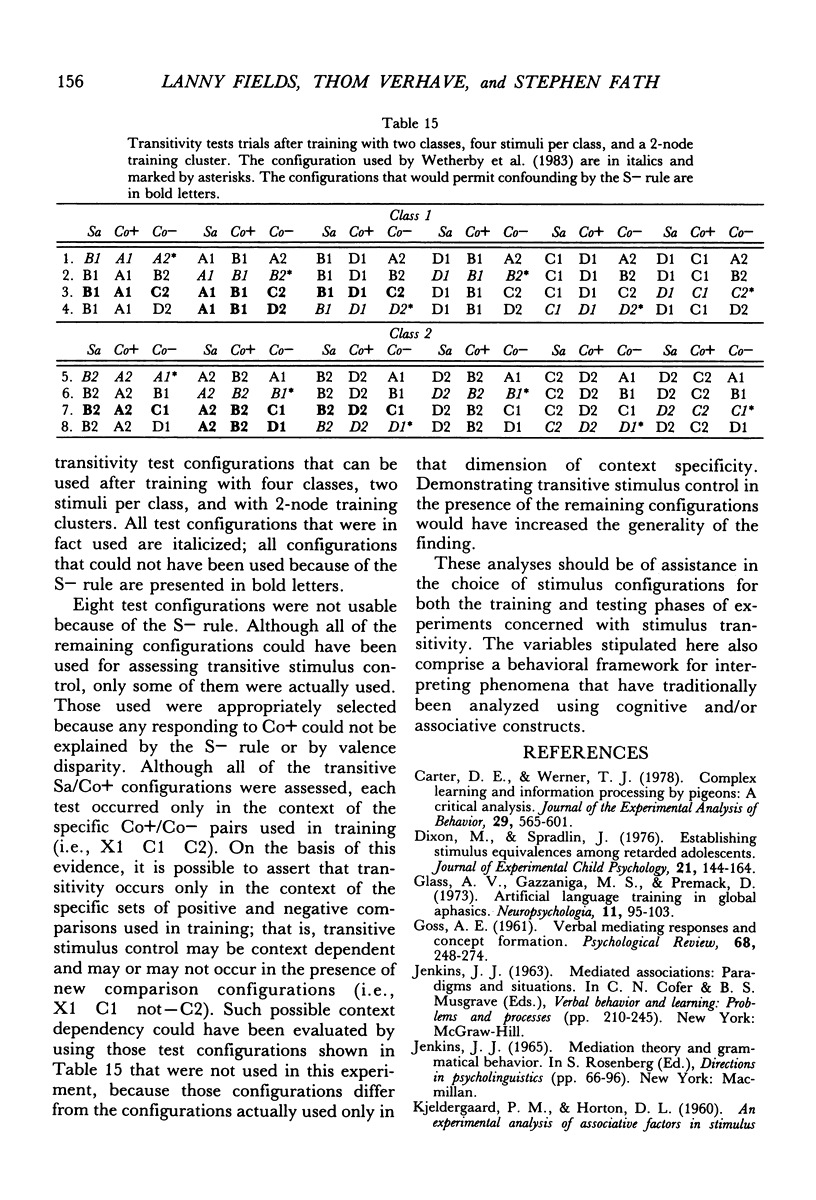
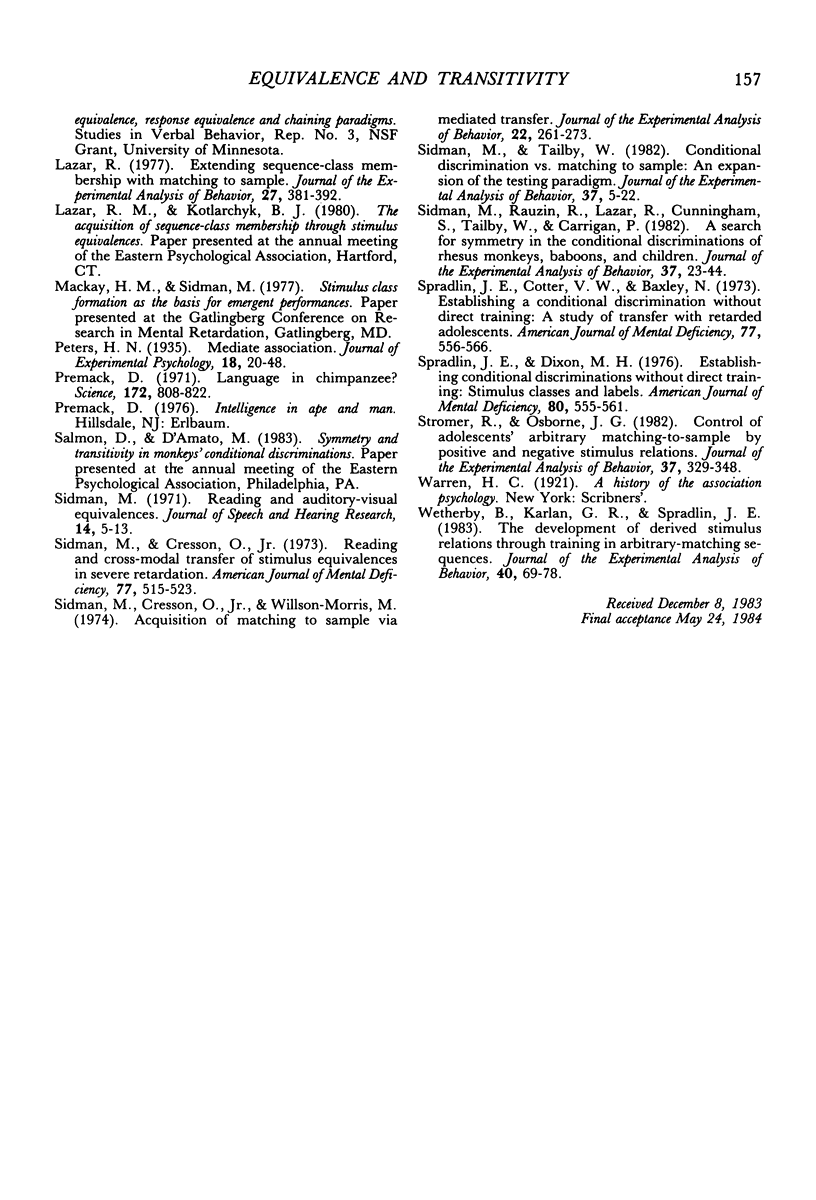
Selected References
These references are in PubMed. This may not be the complete list of references from this article.
- Carter D. E., Werner T. J. Complex learning and information processing by pigeons: a critical analysis. J Exp Anal Behav. 1978 May;29(3):565–601. doi: 10.1901/jeab.1978.29-565. [DOI] [PMC free article] [PubMed] [Google Scholar]
- Dixon M., Spradlin J. Establishing stimulus equivalences among retarded adolescents. J Exp Child Psychol. 1976 Feb;21(1):144–164. doi: 10.1016/0022-0965(76)90064-3. [DOI] [PubMed] [Google Scholar]
- GOSS A. E. Verbal mediating responses and concept formation. Psychol Rev. 1961 Jul;68:248–274. doi: 10.1037/h0047928. [DOI] [PubMed] [Google Scholar]
- Glass A. V., Gazzaniga M. S., Premack D. Artificial language training in global aphasics. Neuropsychologia. 1973 Jan;11(1):95–103. doi: 10.1016/0028-3932(73)90069-9. [DOI] [PubMed] [Google Scholar]
- Lazar R. Extending sequence-class membership with matching to sample. J Exp Anal Behav. 1977 Mar;27(2):381–392. doi: 10.1901/jeab.1977.27-381. [DOI] [PMC free article] [PubMed] [Google Scholar]
- Premack D. Language in chimpanzee? Science. 1971 May 21;172(3985):808–822. doi: 10.1126/science.172.3985.808. [DOI] [PubMed] [Google Scholar]
- Sidman M., Cresson O., Jr Reading and crossmodal transfer of stimulus equivalences in severe retardation. Am J Ment Defic. 1973 Mar;77(5):515–523. [PubMed] [Google Scholar]
- Sidman M., Cresson O., Jr, Willson-Morris M. Acquisition of matching to sample via mediated transfer. J Exp Anal Behav. 1974 Sep;22(2):261–273. doi: 10.1901/jeab.1974.22-261. [DOI] [PMC free article] [PubMed] [Google Scholar]
- Sidman M., Rauzin R., Lazar R., Cunningham S., Tailby W., Carrigan P. A search for symmetry in the conditional discriminations of rhesus monkeys, baboons, and children. J Exp Anal Behav. 1982 Jan;37(1):23–44. doi: 10.1901/jeab.1982.37-23. [DOI] [PMC free article] [PubMed] [Google Scholar]
- Sidman M. Reading and auditory-visual equivalences. J Speech Hear Res. 1971 Mar;14(1):5–13. doi: 10.1044/jshr.1401.05. [DOI] [PubMed] [Google Scholar]
- Sidman M., Tailby W. Conditional discrimination vs. matching to sample: an expansion of the testing paradigm. J Exp Anal Behav. 1982 Jan;37(1):5–22. doi: 10.1901/jeab.1982.37-5. [DOI] [PMC free article] [PubMed] [Google Scholar]
- Spradlin J. E., Cotter V. W., Baxley N. Establishing a conditional discrimination without direct training: a study of transfer with retarded adolescents. Am J Ment Defic. 1973 Mar;77(5):556–566. [PubMed] [Google Scholar]
- Spradlin J. E., Dixon M. H. Establishing conditional discriminations without direct training: stimulus classes and labels. Am J Ment Defic. 1976 Mar;80(5):555–561. [PubMed] [Google Scholar]
- Stromer R., Osborne J. G. Control of adolescents' arbitrary matching-to-sample by positive and negative stimulus relations. J Exp Anal Behav. 1982 May;37(3):329–348. doi: 10.1901/jeab.1982.37-329. [DOI] [PMC free article] [PubMed] [Google Scholar]
- Wetherby B., Karlan G. R., Spradlin J. E. The development of derived stimulus relations through training in arbitrary-matching sequences. J Exp Anal Behav. 1983 Jul;40(1):69–78. doi: 10.1901/jeab.1983.40-69. [DOI] [PMC free article] [PubMed] [Google Scholar]


